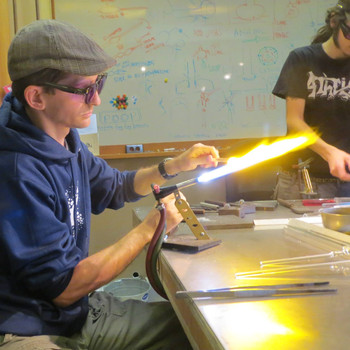What is the function of the following components in media? :
- Agar
- Peptone
- Glucose
- Neutral red
- Thioglycollate
- Agar
- Peptone
- Glucose
- Neutral red
- Thioglycollate
1 Answer
These components all play a specified role... see below!
Explanation:
-
Agar is a solidifying agent... kind of like gelatin. When agar is added to media, it causes the media to gel, and forms a solid surface for the bacteria to grow on. Without agar, the media would instead be a liquid broth, and distinct colonies would not form.
-
"Peptone" is essentially an enzymatic digestion of proteins (usually animal proteins). Bacteria need a source of nitrogen and / or amino acids in order to synthesize their own proteins, and peptone serves this need.
-
Glucose is a common source of carbon (and energy) for most organisms. In media, glucose is broken down by bacteria to provide the energy required to perform all other essential functions, and acts as a carbon source for the synthesis of important biomolecules (amino acids, nucleic acids and carbohydrates)
-
Neutral Red is used as a pH indicator - if the media becomes too acidic (pH < about 6.8), neutral red will cause the medium to become a deep red colour, indicating that the bacteria may be starved of oxygen or nutrients
-
Thioglycolate is added to media to effectively remove oxygen from the growth substrate... therefore, it causes the media to be selective for anaerobic (bacteria which do not grow in the presence of oxygen) and facultative anaerobic (prefer to grow in the absence of oxygen, but can grow with oxygen present, albeit less robustly) bacteria. This component is used in media when we want to only grow bacteria which thrive when oxygen is absent.

